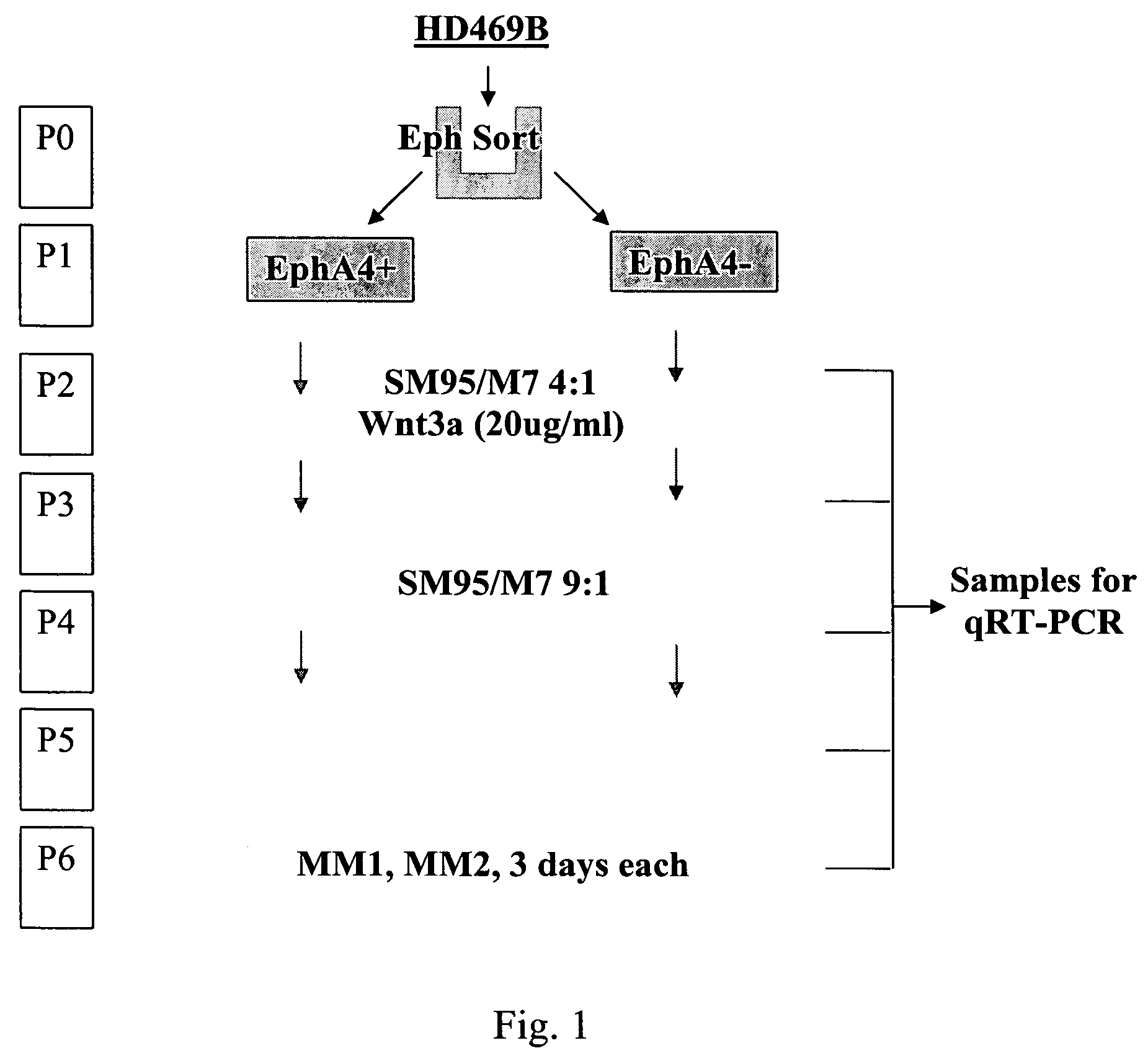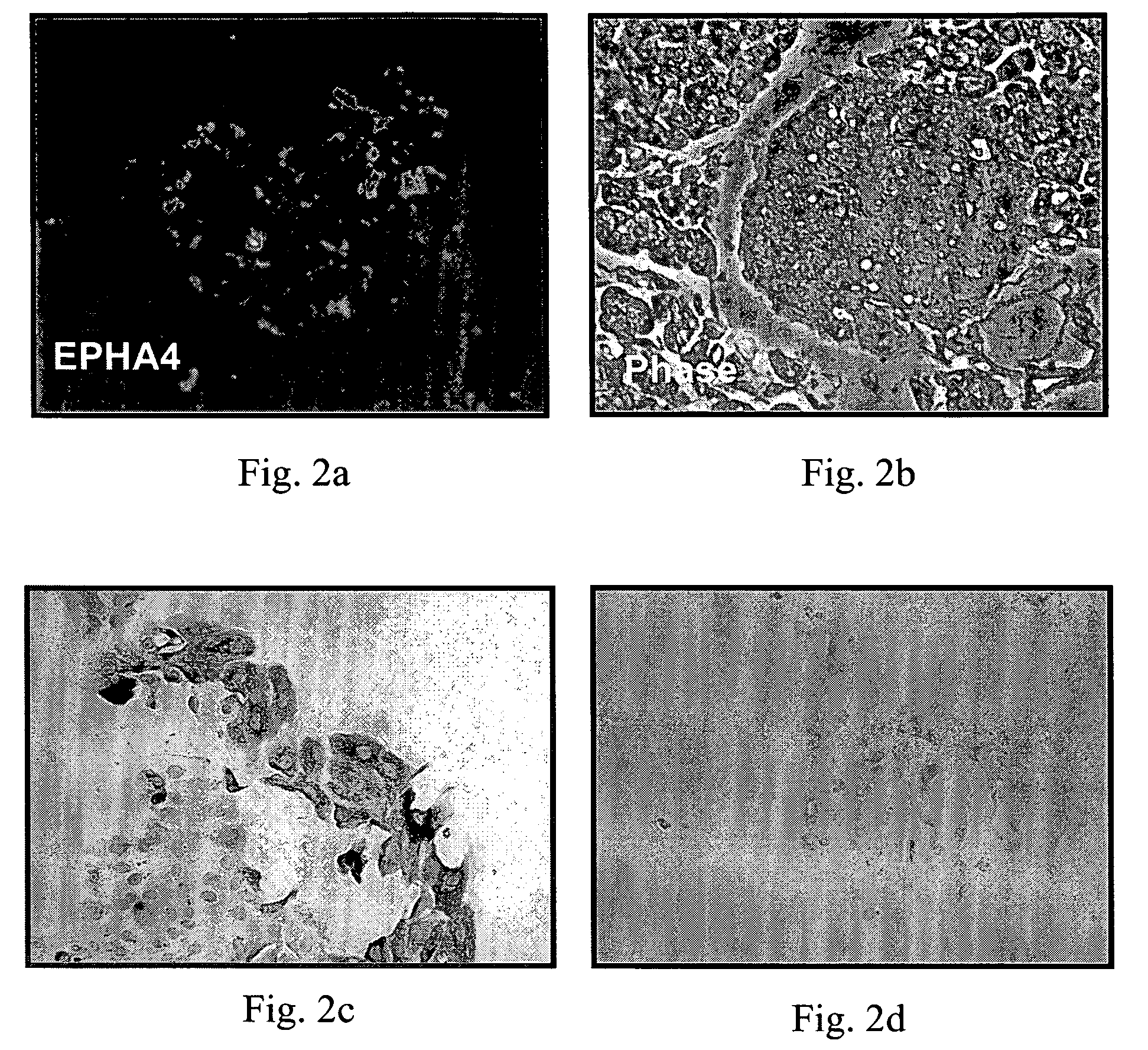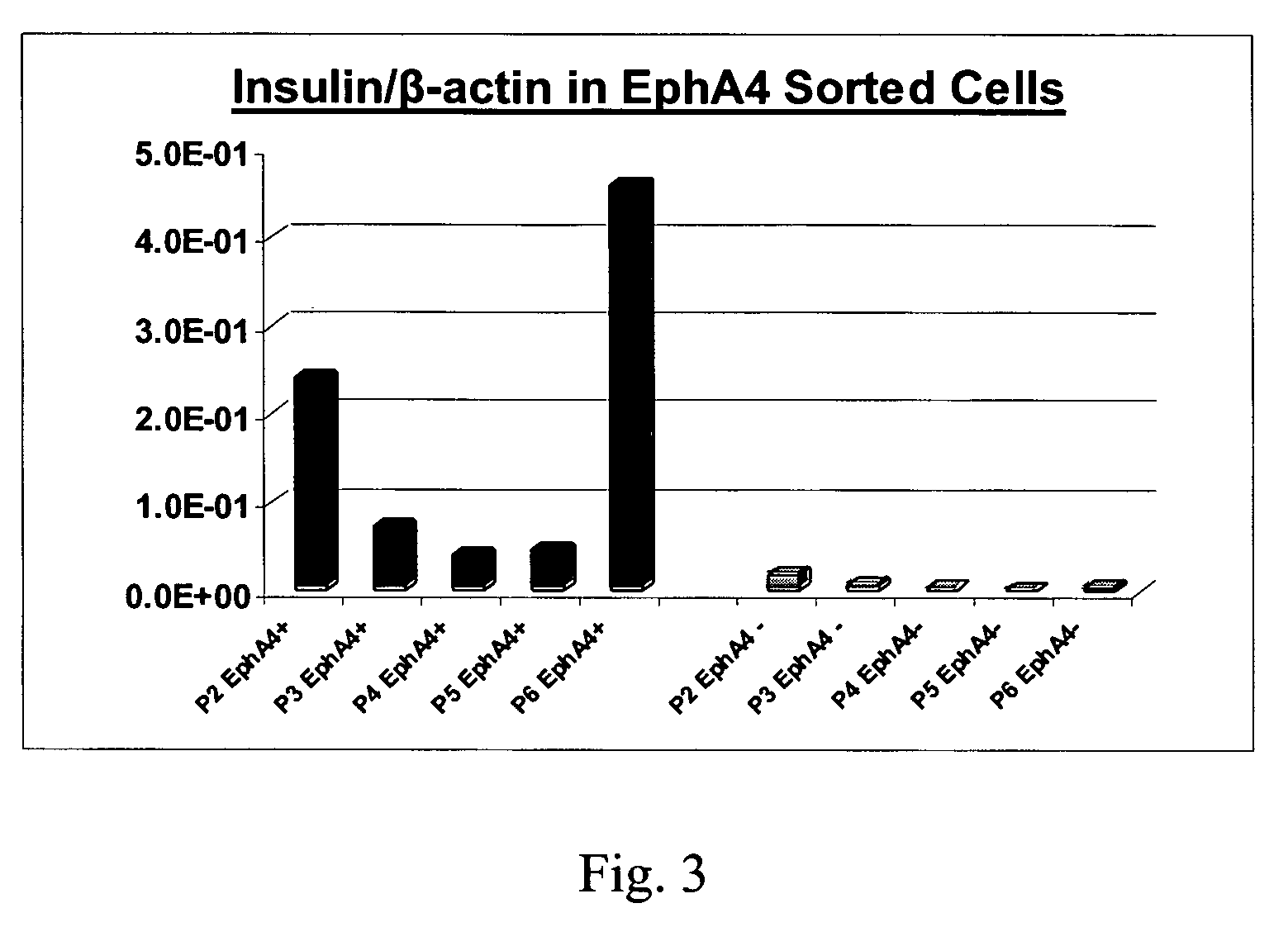EphA4-positive human adult pancreatic endocrine progenitor cells
a technology of human adult pancreas, which is applied in the field of epha4-positive human adult pancreatic endocrine progenitor cells, can solve the problems of hampered therapy, low efficiency, and poor definition of pancreatic progenitor cell populations, and achieves the effect of improving the quality of life, reducing the risk of cancer, and improving the survival rate of pancreatic cancer
- Summary
- Abstract
- Description
- Claims
- Application Information
AI Technical Summary
Problems solved by technology
Method used
Image
Examples
example 1
[0165]This Example sets forth materials and methods used in studies underlying the present invention.
A. Organ Procurement
[0166]Pancreatic cells are isolated from cadaver pancreases. Organ harvesting is orchestrated by United Network for Organ Sharing (“UNOS”) and local organ donor organizations. Only donors with signed consent forms for research are used.
[0167]For harvesting the pancreas, the abdominal aorta is cannulated below the junction of the renal artery, and the portal perfusion is cannulated via the inferior mesentery vein. The cannula is inserted into the portal vein (PV) to the level above the junction of the splenic vein (SV) to the PV. A loose 2-0 tie is put around the SV at the junction with the portal vein, and another loose 2-0 tie is put around the splenic artery (SA). The SV tie is ligated and cut open on the spleen side immediately before the perfusion starts. This makes the pancreas perfusion more efficient without aortic / portal double end pressure which may damag...
example 2
A. Eph Sorting Enhances Pancreatic Phenotype of Cultured Pancreatic Cells
[0177]1. Cell Culture and Cell Selection
[0178]The procedures of Eph sorting and cell culture are shown in FIG. 1. Human pancreatic HD469B (P0) cells were seeded in 10 cm plates in SM95 / M7(4:1) medium and cultured for 6 days at 37° C. Medium was changed every 2 days. On day 6, the HD469B cells were trypsinized and washed with PBS. The cells were sorted with Eph antibody coated with Magnetic Nanoparticles (StemCell Technologies) prepared as described in Example 1. The sorted Eph positive cells (P1) (about 5% of original cell population) and the Eph negative cells were cultured in SM95 / M7 for 3 days. At P2, The Eph sorted cells were cultured in SM95 / M7(4:1) with 20 μg / ml Wnt3a proteins for 5 days. On day 5, cells were trypsinized and washed with PBS. Small portions of both Eph positive and negative cells were harvested for RNA isolation for gene expression analysis by real-time PCR. This procedure was performed at...
example 3
CD56 / EphA4 Double Selection Further Promotes Pancreatic Phenotype of Cultured Pancreatic Cells
A. CD56 Sorting
[0190]1. Cell Culture and Cell Selection
[0191]The procedures of CD56 sorting and cell culture are shown in FIG. 7. Human pancreatic HD469B (P0) cells were seeded in 10 cm plates in SM95 / M7(4:1) medium and culture for 6 days at 37° C. Medium was changed every 2 days. On day 6, the HD469B cells were trypsinized and washed with PBS. The cells were sorted with anti-CD56 antibody coated with Magnetic Nanoparticles (StemCell Technologies) prepared as described in Example 1. The sorted CD56-positive cells (P1) (about 5% of original cell population) and the CD56-negative cells were cultured in SM95 / M7 for 3 days. At P2, the CD56 sorted cells were cultured in SM95 / M7(4:1) with 20 μg / ml Wnt3a proteins for 5 days. On day 5, cells were trypsinized and washed with PBS. Small portions of the cells from both CD56 positive and negative cells were harvested for RNA isolation for gene expressi...
PUM
| Property | Measurement | Unit |
|---|---|---|
| surface area | aaaaa | aaaaa |
| pH | aaaaa | aaaaa |
| volume | aaaaa | aaaaa |
Abstract
Description
Claims
Application Information
 Login to View More
Login to View More - R&D
- Intellectual Property
- Life Sciences
- Materials
- Tech Scout
- Unparalleled Data Quality
- Higher Quality Content
- 60% Fewer Hallucinations
Browse by: Latest US Patents, China's latest patents, Technical Efficacy Thesaurus, Application Domain, Technology Topic, Popular Technical Reports.
© 2025 PatSnap. All rights reserved.Legal|Privacy policy|Modern Slavery Act Transparency Statement|Sitemap|About US| Contact US: help@patsnap.com



